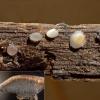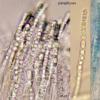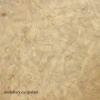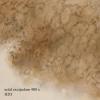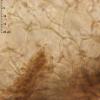
15-12-2025 15:48
 Danny Newman
Danny Newman
Melanospora cf. lagenaria on old, rotting, fallen

15-12-2025 15:54
 Johan Boonefaes
Johan Boonefaes
Unknown anamorph found on the ground in coastal sa

15-12-2025 21:11
 Hardware Tony
Hardware Tony
Small clavate hairs, negative croziers and IKI bb

15-12-2025 07:09
 Danny Newman
Danny Newman
indet. Rutstroemiaceae sp. on unk. fallen leavesMc

15-12-2025 07:05
 Danny Newman
Danny Newman
Pseudosclerococcum golindoi (det: Zotto)near Cosb

15-12-2025 11:49
 Danny Newman
Danny Newman
ITS sequences from the following two collections B

15-12-2025 12:34
 Danny Newman
Danny Newman
indet. Rhytismataceae on oak leafnear Purchase Roa

09-12-2025 12:06
 Andgelo Mombert
Andgelo Mombert
Bonjour,Je recherche l'article concernant Hypobryo
Hymenoscyphus (?) on Quercus wood
Enrique Rubio,
27-11-2012 19:35
My friend F.J. Balda have sent to me from Navarra (NE of Spain) this rare fungus that grows on semirotten wood of Quercus.
The ascomata are shortly stipitate by a short and stout pseudostipe and they are up to 2 mm in diam.
The hymenium seems to be reddening with the age.
The spores are very polimorphic and up to 1-(2-3) septate at maturity. At the moment of the study they have septa inside the living asci.
Asci IKI b of the Hymenoscyphus-type, Without croziers. Only repetitive false croziers or abortive croziers at their base. Paraphyses with multiguttulate Vb's.
Ectal excipulum made of a brownish textura globuloso-angularis or only angularis. Medullary excipulum textura intricata.
I feel my fungus is close to Hymenoscyphus. What's your opinion?
Many thanks again
Hans-Otto Baral,
27-11-2012 20:28

Re : Hymenoscyphus (?) on Quercus wood
Wonderful!! This resembles my Hymenoscyphus "griseobrunneus" but that has smaller spores which are aspetate in the living asci. also true croziers.
H. fulvidulus comes closer in spore size but differs likewise.
But now I see I know your species from photos taken by Uwe Lindemann & Dirk Wischollek from a specimen from NW-Germany, on Rubus. Everything seems to fit!
Here you can study it:
http://www.ascofrance.fr/search_forum/9692?
Zotto
H. fulvidulus comes closer in spore size but differs likewise.
But now I see I know your species from photos taken by Uwe Lindemann & Dirk Wischollek from a specimen from NW-Germany, on Rubus. Everything seems to fit!
Here you can study it:
http://www.ascofrance.fr/search_forum/9692?
Zotto
Enrique Rubio,
27-11-2012 20:45
Re : Hymenoscyphus (?) on Quercus wood
Yes, Zotto. I think this is the same fungus!
Do you need my photos at higher resolution?
Many thanks for your quickly help
Do you need my photos at higher resolution?
Many thanks for your quickly help
Hans-Otto Baral,
27-11-2012 20:46

Re : Hymenoscyphus (?) on Quercus wood
Yes, you can send me.
thanks
thanks
DirkW,
30-11-2012 11:01

Re : Hymenoscyphus (?) on Quercus wood
hello enrique and zotto,
great to see this strange fungus again! the multi constricted septae are also there. with the greyisch-blue colours and the dark margo it looks like a hybris out of hymenoscyphus and mollisia. you could name it hymenoscyphus mollisius, if you publish! ;-)
unfortunately we failed to get another collection ... but now we know one thing: its not restricted to rubus - and not to quercus!
best
dirk
great to see this strange fungus again! the multi constricted septae are also there. with the greyisch-blue colours and the dark margo it looks like a hybris out of hymenoscyphus and mollisia. you could name it hymenoscyphus mollisius, if you publish! ;-)
unfortunately we failed to get another collection ... but now we know one thing: its not restricted to rubus - and not to quercus!
best
dirk
Enrique Rubio,
30-11-2012 12:16
Re : Hymenoscyphus (?) on Quercus wood
Hi Dirk
I think Pachydisca could be a good genus for it, if this genus can be segregated of Hymenoscyphus.
Regards
I think Pachydisca could be a good genus for it, if this genus can be segregated of Hymenoscyphus.
Regards
Nicolas VAN VOOREN,
30-11-2012 14:10

Re : Hymenoscyphus (?) on Quercus wood
Je ne pense pas que le genre Pachydisca Boud. puisse être utilisé (le cas échéant) car il est typifié par Helotium guernisacii P. Crouan & H. Crouan qui, si ma mémoire est bonne, est considéré comme un Rutstroemia par Mme Le Gal
Hans-Otto Baral,
30-11-2012 14:53

Re : Hymenoscyphus (?) on Quercus wood
Yes, Nicolas, the type (guernisacii) was classified in Rutstroemia by Le Gal, but I think it does not belong there. LeGal described an external gel which is reminiscent of the genus Discinella. Very complicated nomenclature!
And yes, Hymenoscyphus or Phaeohelotium mollisioides ?could be a good name.
Zotto
And yes, Hymenoscyphus or Phaeohelotium mollisioides ?could be a good name.
Zotto
